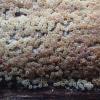
14-06-2019 06:40
 Django Grootmyers
Django Grootmyers
What is this parasite of Cantharellus minor? Found

11-06-2019 01:49
Valencia Lopez Francisco JavierHola amigos...Adjunto fotos de unas supuestas Para

11-06-2019 00:32
Elisabeth StöckliBonsoir, Sur feuilles de ronce (Rubus/roncier à

11-06-2019 16:20
Garcia SusanaHola, He recolectado este asco sobre estiercol, c

12-06-2019 22:42
Ethan CrensonHello all, A friend noticed these tiny fruiting b

11-06-2019 00:08
Ethan CrensonHello all, I found a few of these tiny black cush
Small, on hardwood.
Per Marstad,
14-06-2019 09:40
Ca. 1 mm in diameter with hair.
Asci: 50-54 x 4 my.
Sp.: 7-10 x 2-3, with 2 septa.
Hair: ca. 70x2 my.
Christian Lechat,
14-06-2019 10:45

Re : Small, on hardwood.
Dscimycetes or Pyrenomycetes, difficult to se on your image.
Could you please send us an image of amathecium?
Regards,
Christian
Thomas Læssøe,
14-06-2019 17:12
Re : Small, on hardwood.
definitely hypocrealean but additional images would be very helpful :-)


